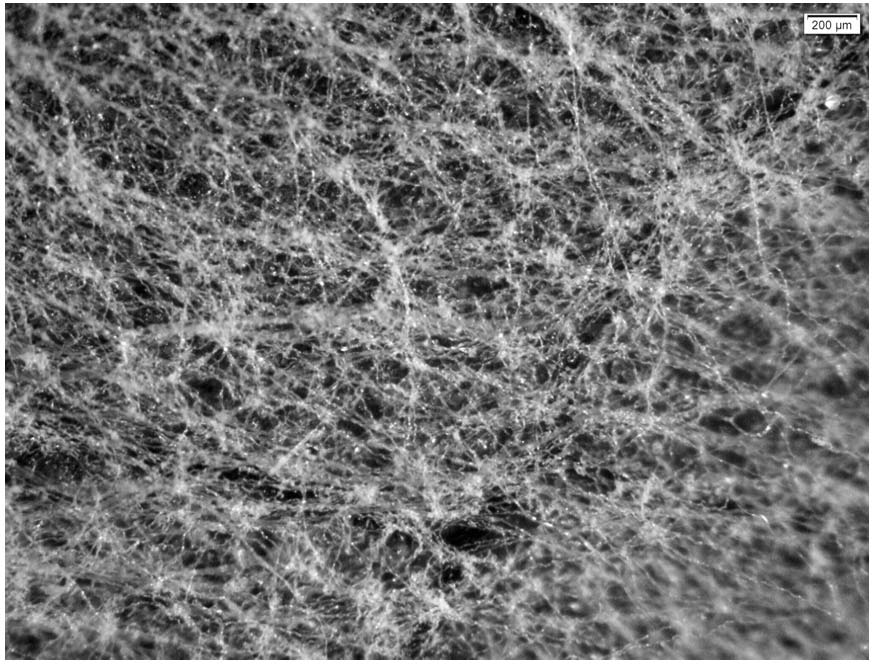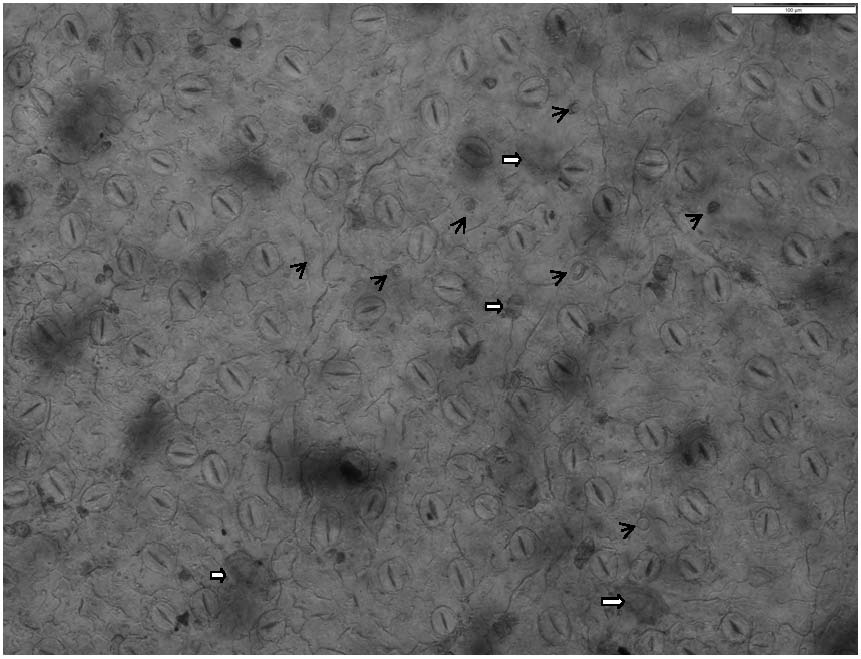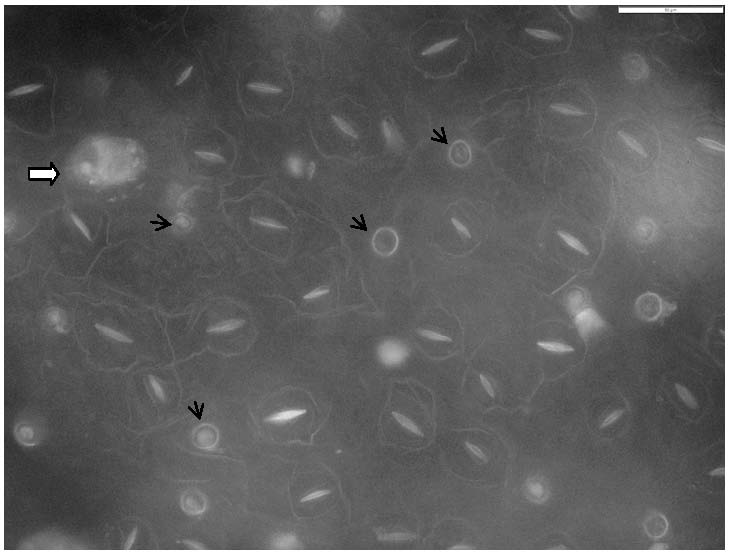Microscopic slide preparation method for observing characteristics of lower epidermis of folium artemisiae argyi
A technology of micro-slicing and epidermis, applied in the field of microscopic identification and observation of plants, can solve the problems of insufficient depth, difficulty in tearing and dissociating the epidermis, no public reports, etc., and achieves clear observation, high success rate, and easy operation. simple effect
- Summary
- Abstract
- Description
- Claims
- Application Information
AI Technical Summary
Problems solved by technology
Method used
Image
Examples
Embodiment 1
[0021] A kind of microscopic preparation method for observing the characteristics of the lower epidermis of Folium Artemisiae Artifacts of the present invention comprises the following steps:
[0022] (1) Leaf treatment: take fresh mugwort leaves, cut 6-8mm small pieces, and immerse them in methanol at room temperature for 6-10 hours;
[0023] (2) Soaking in hydrochloric acid: Use tweezers to transfer small pieces of leaves from methanol to hydrochloric acid with a mass concentration of 10% to 15%, and soak at room temperature for 8 to 12 hours;
[0024] (3) Separation of mesophyll and bleaching: Take out the small pieces of leaves, rinse them with distilled water for 1 to 3 minutes, and put the small pieces of leaves in a mixture of 5% to 10% sodium hydroxide and 2% to 3% hydrogen peroxide at a volume ratio of 1:1. In the mixed solution, soak at room temperature for 6-12 hours to dissociate the mesophyll tissue and bleach it at the same time;
[0025] (4) Remove non-glandula...
Embodiment 2
[0032] A kind of microscopic preparation method for observing the characteristics of the lower epidermis of Folium Artemisiae Artifacts of the present invention comprises the following steps:
[0033] (1) Leaf treatment: take fresh Artemisia argyi leaves, cut 7mm pieces, and immerse them in methanol at room temperature for 8 hours;
[0034] (2) Soaking in hydrochloric acid: Use tweezers to transfer small pieces of leaves from methanol to hydrochloric acid with a mass concentration of 12.5%, and soak at room temperature for 10 hours;
[0035] (3) Separate the mesophyll for bleaching: Take out the small pieces of leaves, rinse them with distilled water for 2 minutes, put the small pieces of leaves in a mixture of 7.5% sodium hydroxide and 2.5% hydrogen peroxide at a volume ratio of 1:1, soak at room temperature for 9 hours, dissociates mesophyll tissue while also bleaching it;
[0036] (4) Remove non-glandular hairs: transfer small pieces of leaves to alcohol with a mass concen...
Embodiment 3
[0042] A kind of microscopic preparation method for observing the characteristics of the lower epidermis of Folium Artemisiae Artifacts of the present invention comprises the following steps:
[0043] (1) Leaf treatment: take fresh Artemisia argyi leaves, cut into 6mm pieces, and immerse them in methanol at room temperature for 6.5 hours;
[0044] (2) Soaking in hydrochloric acid: Use tweezers to transfer small pieces of leaves from methanol to hydrochloric acid with a mass concentration of 14%, and soak at room temperature for 9 hours;
[0045] (3) Separation of mesophyll and bleaching: Take out the small pieces of leaves, rinse them with distilled water for 3 minutes, put the small pieces of leaves in a mixture of 6% sodium hydroxide and 2% hydrogen peroxide at a volume ratio of 1:1, soak at room temperature for 12 hours, dissociates mesophyll tissue while also bleaching it;
[0046] (4) Remove non-glandular hairs: transfer the small pieces of leaves to alcohol with a mass ...
PUM
 Login to View More
Login to View More Abstract
Description
Claims
Application Information
 Login to View More
Login to View More - R&D
- Intellectual Property
- Life Sciences
- Materials
- Tech Scout
- Unparalleled Data Quality
- Higher Quality Content
- 60% Fewer Hallucinations
Browse by: Latest US Patents, China's latest patents, Technical Efficacy Thesaurus, Application Domain, Technology Topic, Popular Technical Reports.
© 2025 PatSnap. All rights reserved.Legal|Privacy policy|Modern Slavery Act Transparency Statement|Sitemap|About US| Contact US: help@patsnap.com



